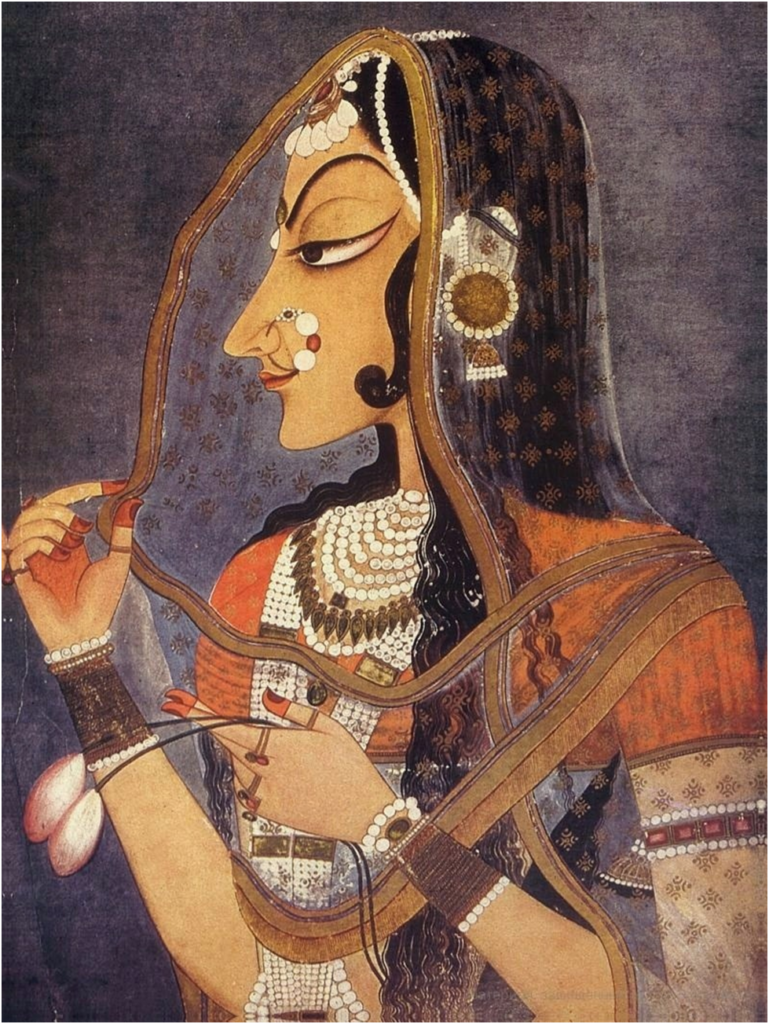Bani Thani is an miniature painting painted by Nihal Chand from the Marwar school of Kishangarh. It portrays a woman who is elegant and graceful. The painting’s subject, Bani Thani, was a singer and poet in Kishangarh in the time of king Sawant Singh (1748–1764).
Must read: Kalamkari Paintings

Bani Thani is characterized by idealized distinct features such as arched eyebrows, lotus-like elongated eyes and pointed chin , a highly idealized facial form reminiscent of Indian sculpture art.
Must read: Mithila paintings
Influence of other Schools
Kishangarh was influenced by Bundi painting in its use of lush vegetation, dramatic night skies, vivid movement and Mughal painting in its use of side-profile portraits, though it can be distinguished from both of them due to its extremely meticulous details, rich colours and fine technique.
Must read: Phad paintings
Background
Bani Thani’s real name was Vishnupriya and she was brought to the Kishangarh court as a dancer by the mother of Savant Singh. However, because of her good looks, immaculate grooming, her talent not only as a dancer but as a poet, she charmed everyone at the court and very soon caught the attention of Savant Singh, who fell in love with her and married her in 1740. Savant Singh was a reluctant monarch, for his heart was in Krishna bhakti and not in matters of the state.
Must read: Warli paintings
Inspired by Radha
The patron-king Savant Singh was a member of the Vallabhacharya sect devoted to Krishna, due to which religiously themed paintings flourished in the court under his patronage. The paintings of Kishangarh school are characterised by a religious fervour and this might have been the reason why the portraiture of the queen was compared to, and is believed to have been inspired by, the figure of Radha.
Must read: Kalighat paintings
The painted nayika of Kishangarh remains an important landmark in the history of painted women in Indian Art. At the same time, it is equally enigmatic and is,therefore,sometimes compared with Mona Lisa.
External link: https://en.wikipedia.org/wiki/Bani_Thani
PRACTICE QUESTIONS
QUES . The well-known painting “Bani Thani” belongs to the: UPSC 2018
(a) Bundi school
(b) Jaipur school
(c) Kangra school
(d) Kishangarh school
(d)
